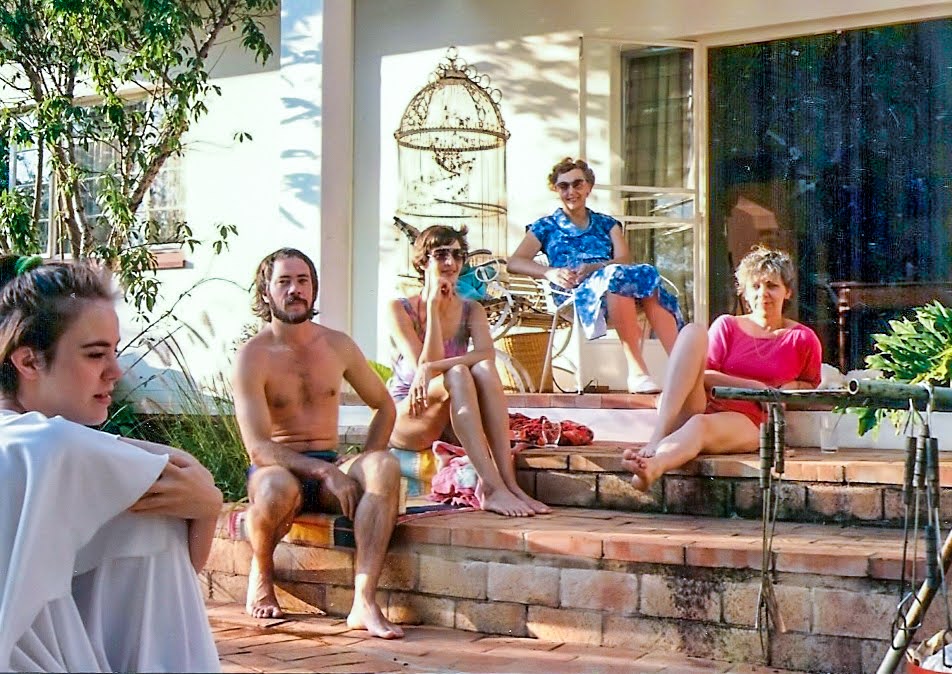Carla Gericke
Day 77 of My Living Xperiment: My railtrail… https://t.co/lwkKFLkW4o
— Carla Gericke, Live Free And Thrive! (@CarlaGericke) March 18, 2025
John Cleese nailed it 30 years ago. Amazing how little things change.
— Joe Rogan Podcast (@joeroganhq) March 16, 2025
Repost: @builders @joerogan pic.twitter.com/j69FTIJdWj



Sadly, the LPNH doesn’t understand the point I was making at all. But what more can you expect from The Hardly Boys?
Day 76 of My Living Xperiment: New NHExit poll dropping soon, looking back on fighting the lockdown from Day 1, and why character matters… https://t.co/Cb7uzTjP0W
— Carla Gericke, Live Free And Thrive! (@CarlaGericke) March 17, 2025
Day 75 of My Living Xperiment: Just checking in… raincheck on self-sabotage… Wait, is that?!? https://t.co/NX4Kp9gEeE
— Carla Gericke, Live Free And Thrive! (@CarlaGericke) March 16, 2025
Day 74 of My Living Xperiment: It's thec3rd Saturday of the month, so here's my quick Right-to-Know NH update! Who is ready for an overhaul? https://t.co/7faxlLgMka
— Carla Gericke, Live Free And Thrive! (@CarlaGericke) March 15, 2025
Today’s 420 Ramble includes a lot of information about how to regulate your Central Nervous System. If you find yourself flying off the handle, find yourself repeating patterns of behavior over and over, find yourself in beefs because you are intoxicated, this one is for you!
Day 73 of My Living Xperiment: Friday 420 Ramble… Politics is the Art of Hypocrisy, beware those attracted to power, and how to stop being a lunatic, maybe. https://t.co/95QvF9w28F
— Carla Gericke, Live Free And Thrive! (@CarlaGericke) March 14, 2025
It’s been two weeks since Ma passed away.
Thank you to all who reached out with condolences, sent flowers, and to all our family, dispersed across the world–South Africa, America, Australia, and Canada–a special thanks for the shared memories and photos. I look forward to connecting more at Madalein Gericke‘s celebration of life in May.
Of all the great photos I received of my effortlessly beautiful mother, I love this one of her lounging in her reddish-pink shirt above the most. (I feel like she would judge me right now for being too lazy to figure out the exact shade, like an oil painter might. lol)
This photo represents three generations of South Africans: my mother and her brother, Schalk, his wife Elizabeth, and her mother, Tannie Mimi, who, as a good friend of my Ouma, always played a role in my life, and me, in 1988, in my vintage store white dress with the handkerchief hem. I lost my virginity in that dress.
This is next to the pool at our home in Colbyn, where summers were spent swimming, braaing, drinking, arguing, loving, laughing, and living.
My mother had a hard life for someone so fortunate. Her stroke changed her, but her sense of humor and spark remained until the very the end. For that we were lucky.
Right after she passed, before my sister called me, a huge bird landed right in my eyesight as I was pensively staring out the window trying to process the reality of her impending death.
I believe she was coming to say goodbye, and now I will always see her in all the birds, which means she is forever around me. ![]()
![]()
![]()
![]()
![]()
![]()
![]()
![]()
Hey Trump, Let’s Release All the Crypto Political Prisoners! (Manch Talk 03/12/25)
Politics is the Art of Hypocrisy! International documentary film crew in town, it is time to Free Ian Freeman and other crypto political prisoners, Democrat Trinidad Tellez voted against a bill to do away with inspection stickers, yet hers is expired??? Keep red flag laws out of NH, thank you to the New Hampshire Liberty Alliance for another excellent Gold Standard, officer involved shooting at the Planet Fitness in Londonderry, Sunshine Week, and more! LIKE THE NEW SHOW? Subscribe!!!
Day 71 of My Living Xperiment: "Peaceful vandalism" and other tall tales… https://t.co/rtQjvExIgh
— Carla Gericke, Live Free And Thrive! (@CarlaGericke) March 12, 2025



